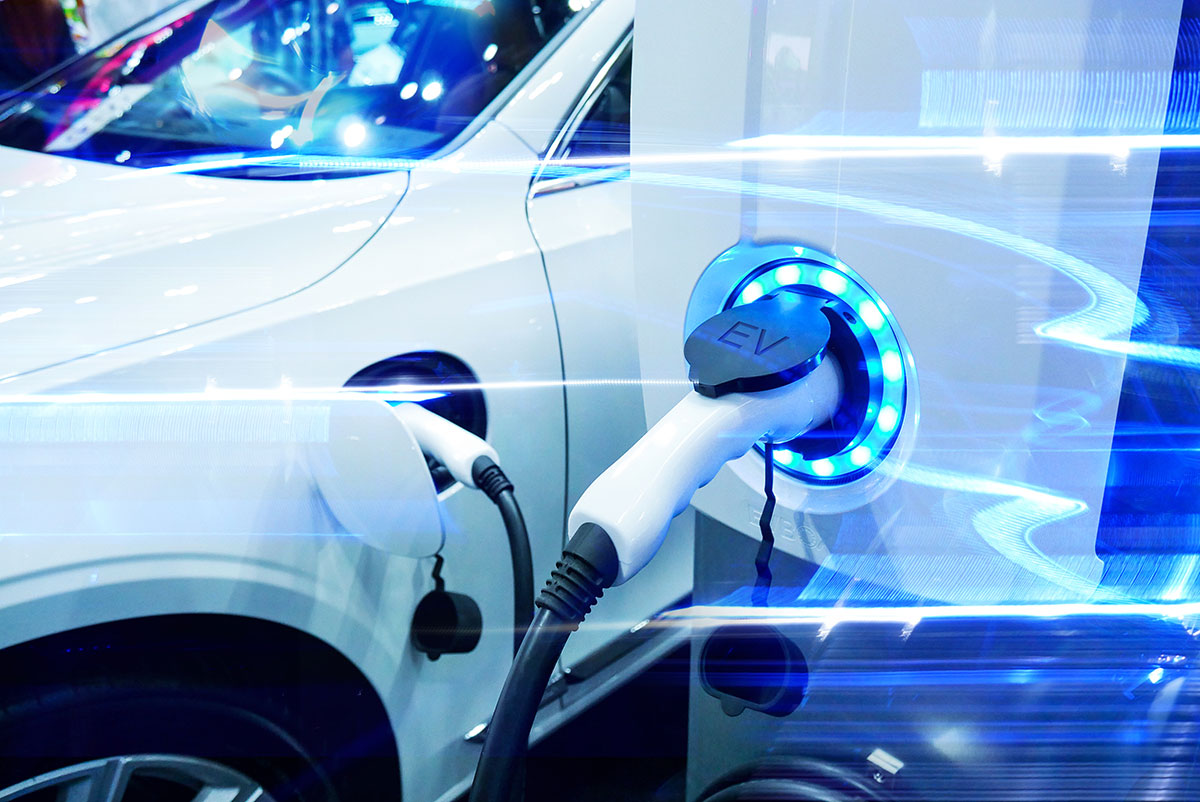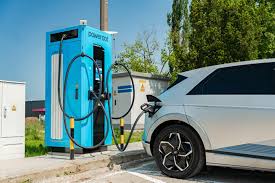The Evolution of Electric Vehicles: From Concept to Mass Adoption

Introduction
Electric vehicles (EVs) have come a long way since their early conceptualization, transitioning from niche inventions to mainstream transportation solutions. As the world grapples with environmental challenges such as climate change and air pollution, the push for cleaner alternatives to traditional gasoline-powered vehicles has gained significant momentum. This article traces the evolution of electric vehicles, highlighting key milestones, technological advancements, and the factors driving the global shift towards EV adoption.
1. The Early Days of Electric Vehicles
- The First Electric Cars (19th Century)
- The concept of electric vehicles dates back to the 19th century, with the first electric car built by Scottish inventor Robert Anderson in the 1830s. These early EVs were powered by non-rechargeable batteries and were not practical for widespread use.
- In the 1870s and 1880s, inventors like Thomas Parker and William Morrison developed more functional electric vehicles. Morrison’s vehicle, built in 1890, is often regarded as the first practical EV. These vehicles were popular in urban areas due to their smooth operation and quiet engines, offering a stark contrast to the noisy and smelly internal combustion engine vehicles of the time.
- Decline and the Rise of Gasoline Cars
- Despite their initial popularity, electric vehicles faced several challenges. Limited battery technology, lack of charging infrastructure, and the rise of mass-produced gasoline vehicles, such as Henry Ford’s Model T, led to the decline of EVs in the early 20th century. Gasoline cars offered longer ranges and were cheaper to manufacture, leading to the eventual dominance of internal combustion engine (ICE) vehicles.
2. The Resurgence of Electric Vehicles
- The 1970s Oil Crisis and the Energy Crisis
- The 1970s marked a turning point for electric vehicles. The oil crisis and rising gasoline prices prompted renewed interest in alternatives to fossil fuel-powered cars. During this period, the concept of EVs began to resurface, with automakers and engineers experimenting with more efficient battery technologies.
- In 1973, the American automaker, the General Motors (GM) Electric Vehicle Development Program, was established to explore electric-powered cars. However, EVs still struggled with limited battery performance and high manufacturing costs.
- The 1990s and the Birth of Modern EVs
- The 1990s saw the development of more modern electric vehicles, largely due to stricter environmental regulations and the growing demand for cleaner vehicles. In 1996, GM launched the EV1, one of the first mass-produced electric cars, which gained popularity in select markets but was eventually discontinued.
- Despite the discontinuation of the EV1, the 1990s laid the groundwork for the electric vehicle industry. Companies like Toyota and Honda also introduced hybrid vehicles, combining gasoline engines with electric motors, which helped raise awareness of the potential of alternative energy sources for transportation.
3. The Role of Innovation in EV Development
- Battery Technology Advancements
- One of the major challenges for electric vehicles has always been the limitations of battery technology. Early EVs suffered from short driving ranges and long charging times, which made them impractical for many consumers.
- In the early 2000s, lithium-ion (Li-ion) batteries began to replace older battery technologies. Li-ion batteries offered higher energy density, faster charging times, and longer lifespan, significantly improving the performance of electric vehicles.
- Companies like Tesla played a pivotal role in driving advancements in battery technology, with their focus on increasing energy density and reducing battery costs. Tesla’s use of large battery packs, optimized battery management systems, and investments in Gigafactories helped bring EVs into the mainstream.
- Government Incentives and Regulations
- Government incentives and subsidies have been crucial in driving the growth of the electric vehicle market. Countries around the world began offering tax credits, rebates, and other financial incentives to encourage consumers to buy EVs.
- In addition to incentives, stricter emission regulations and environmental policies have pushed automakers to accelerate their transition to electric vehicles. The European Union, for example, set ambitious targets for reducing carbon emissions, which has led many automakers to invest heavily in electric vehicle production.
4. The Rise of Tesla and the EV Revolution
- Tesla’s Impact on the EV Industry
- Founded in 2003 by engineers Martin Eberhard and Marc Tarpenning, Tesla Motors (now Tesla, Inc.) quickly became a leader in the electric vehicle market. The company’s breakthrough moment came in 2008 with the release of the Tesla Roadster, the first fully electric sports car capable of traveling over 200 miles on a single charge.
- Tesla’s success proved that electric vehicles could be both practical and desirable. With CEO Elon Musk’s vision of mass-market EVs, Tesla introduced models like the Model S (2012), Model 3 (2017), and Model Y (2020), all of which gained popularity and pushed other automakers to prioritize EV development.
- The Growth of EV Infrastructure
- As EV adoption grew, so did the need for a robust charging infrastructure. Tesla’s Supercharger network, a global network of fast-charging stations, has played a critical role in addressing concerns about range anxiety. Other companies and governments have also invested heavily in building public charging stations to support the growing number of electric vehicles on the road.
- In addition to fast-charging infrastructure, Tesla’s advancements in autonomous driving, software updates, and in-car technology have set new standards for the automotive industry, further cementing EVs as the future of transportation.
5. The Current State of the Electric Vehicle Market
- Global Adoption and Market Growth
- The electric vehicle market has experienced significant growth in recent years, with global sales reaching record levels. In 2023, nearly 14 million electric vehicles were sold worldwide, a figure that is expected to grow as more automakers introduce electric models and consumer demand for sustainable transportation options increases.
- Major automakers such as General Motors, Ford, Volkswagen, and Nissan have committed to transitioning to electric fleets, with many pledging to phase out internal combustion engines by 2030 or 2040. The automotive industry is undergoing a transformation, and electric vehicles are at the forefront of this change.
- Challenges in the EV Market
- Despite the rapid growth of the electric vehicle market, there are still challenges that need to be addressed. The high cost of electric vehicles remains a barrier for many consumers, although prices are gradually decreasing as battery technology improves and production scales up.
- In addition to cost, the availability of charging infrastructure remains a concern, especially in rural areas and developing countries. The industry will need to invest heavily in charging networks to ensure that EVs are accessible to a wider audience.
6. The Future of Electric Vehicles
- Advancements in Battery Technology
- The future of electric vehicles is closely tied to advancements in battery technology. Researchers are exploring new battery chemistries, such as solid-state batteries, which promise higher energy densities, faster charging times, and lower costs.
- Companies are also working on improving battery recycling processes, ensuring that the growing number of EVs does not lead to an increase in waste or environmental impact.
- The Emergence of New EV Models
- The electric vehicle market is expanding beyond passenger cars, with electric trucks, buses, and delivery vehicles gaining popularity. Companies like Rivian and Nikola are leading the charge in electric truck production, while traditional automakers like Ford have launched electric versions of popular models such as the F-150 and the Mustang.
- The growth of the electric vehicle market is expected to continue, with new models offering increased range, faster charging times, and advanced features like autonomous driving.
- Sustainability and Green Energy Integration
- As the world shifts towards renewable energy sources, electric vehicles will play a key role in reducing carbon emissions. The integration of EVs with solar and wind energy systems will allow for greener, more sustainable transportation.
- Smart grids and vehicle-to-grid (V2G) technologies will allow EVs to become mobile energy storage units, helping to balance the grid and optimize energy use.
Conclusion
The evolution of electric vehicles from their early days to mass adoption has been marked by significant technological advancements, environmental concerns, and the desire for cleaner transportation. While challenges remain, the future of electric vehicles looks promising, with continued innovation, increased consumer demand, and global efforts to reduce emissions. As we look ahead, electric vehicles will play a critical role in shaping a sustainable and greener future for transportation.





